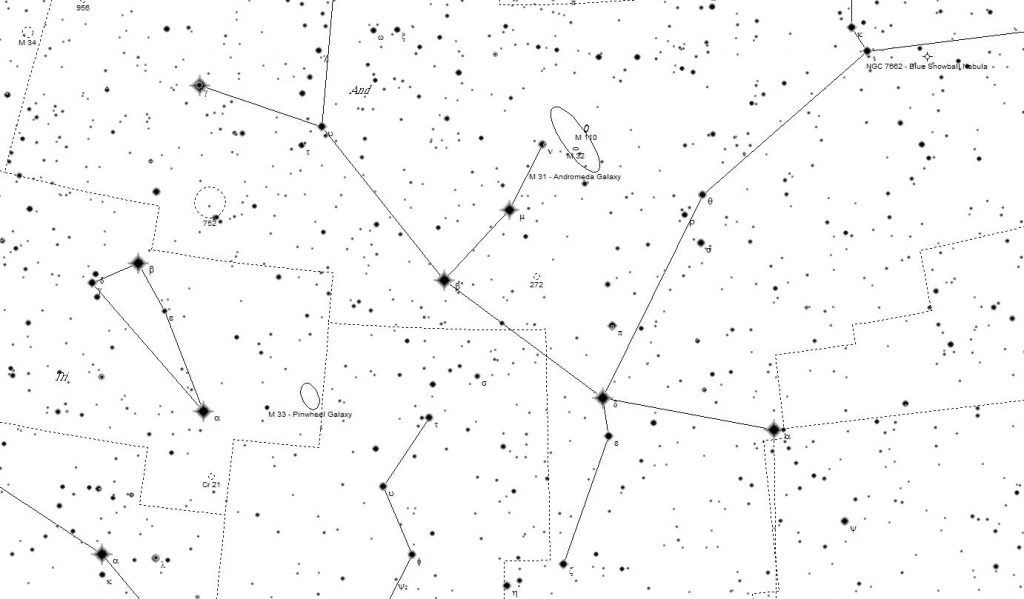Early morning continues to be the best time for observing the bright planets, with Jupiter, Venus and Mars (currently distant and relatively faint) dancing around each other in the pre – dawn sky. In the evening sky we still have Uranus and Neptune. The good news about these more difficult planets is, once you have found them at a given apparition, they won’t have moved far the next time you look a couple of weeks later. Or even next year!
This is also a good month for looking at our biggest galactic neighbours. The nearest ones of any significance are the two Magellanic Clouds, but they are quite close to the south celestial pole, and so only visible from the southern sky. Their larger cousins, the Andromeda Galaxy (M31), and M33 are very much northern sky objects, so there is a reasonable division of neighbourly galactic sights. These galaxies are at their best this month. M31 is easiest to find; the simplest way is to look below the “W” of the Cassiopeia. Another is to look for the Square of Pegasus, and then the line of bright stars that run to the left and up from its top left corner; these are the main stars of the constellation Andromeda. The first bright one after the square is Beta, and if you head up 2 stars from that towards Cassiopeia that will take you to M31.
The Andromeda Galaxy is so bright it is usually visible with the naked eye, and indeed at 2 1/2 million light years distance it is the most distant object in the universe that can be seen with the naked eye. It is best seen in large binoculars; in telescopes the view can disappoint, though that is the best way to see M31’s two close companion galaxies.
Finding the Andromeda Galaxy via Beta Andromedae has another advantage. Much the easiest way of finding the much fainter M33 (sometimes called the Pinwheel) Galaxy is to take a line from M31 down to Beta, and then carry on the same direction and distance on the other side, and there you will find M33. Or rather, you might. The Galaxy is face on to us, and has a reasonable total brightness, but is about as extensive as the full moon, and therefore it has a very low surface brightness. Binoculars are your best bet, and may well show it even when quite a large telescope will not.
The map below may help you find your way around.

